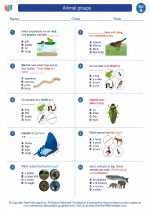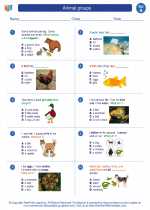What is Climate?
Climate refers to the long-term patterns of temperature, humidity, wind, and other atmospheric conditions in a specific area. It is different from weather, which describes short-term changes in atmospheric conditions.
Factors Affecting Climate
Several factors influence the climate of a region:
- Latitude: The distance from the equator affects the amount of sunlight a region receives, which in turn impacts its temperature and climate.
- Altitude: Higher altitudes generally have cooler temperatures due to lower air pressure and thinner atmosphere.
- Topography: The shape of the land, including mountains, valleys, and bodies of water, can influence local climate patterns.
- Ocean Currents: Bodies of water, especially oceans, can moderate the climate of nearby land areas by transferring heat.
- Vegetation: The type and amount of plant life in an area can affect temperature, humidity, and precipitation.
Types of Climate
There are several main types of climate, including:
- Tropical Climate: Found near the equator, characterized by high temperatures and high humidity.
- Temperate Climate: Found in the mid-latitudes, with distinct seasons including mild summers and cool winters.
- Desert Climate: Characterized by low precipitation and high temperatures, often found in arid regions.
- Polar Climate: Found near the poles, with very cold temperatures and little precipitation.
- Mountain Climate: Varies with altitude, but generally includes cooler temperatures and more precipitation at higher elevations.
Effects of Climate Change
Climate change refers to significant and lasting changes in the Earth's climate patterns. It can lead to a variety of environmental and societal impacts, including:
- Rising Sea Levels: As global temperatures increase, polar ice caps and glaciers melt, leading to higher sea levels.
- Extreme Weather Events: Climate change can contribute to more frequent and severe storms, heatwaves, and other extreme weather phenomena.
- Shifts in Ecosystems: Changing climate patterns can disrupt natural habitats and lead to shifts in the distribution of plant and animal species.
- Impact on Agriculture: Altered climate conditions can affect crop growth, water availability, and the prevalence of pests and diseases.
Study Guide
To study climate effectively, consider the following key points:
- Understand the difference between climate and weather.
- Learn about the factors that influence climate, including latitude, altitude, and ocean currents.
- Be able to identify and describe the main types of climate, such as tropical, temperate, desert, polar, and mountain climates.
- Explore the impacts of climate change on the environment and human societies.
- Consider conducting research or projects related to local or global climate patterns and changes.
[Climate] Related Worksheets and Study Guides:
.◂Science Worksheets and Study Guides First Grade. Animal groups
Study Guide Animal groups
Animal groups  Worksheet/Answer key
Worksheet/Answer key Animal groups
Animal groups  Worksheet/Answer key
Worksheet/Answer key Animal groups
Animal groups  Worksheet/Answer key
Worksheet/Answer key Animal groups
Animal groups  Vocabulary/Answer key
Vocabulary/Answer key Animal groups
Animal groups 

 Worksheet/Answer key
Worksheet/Answer key
 Worksheet/Answer key
Worksheet/Answer key
 Worksheet/Answer key
Worksheet/Answer key
 Vocabulary/Answer key
Vocabulary/Answer key

The resources above cover the following skills:
LIFE SCIENCE
From Molecules to Organisms: Structures and Processes
Design a solution to a human problem by using materials to imitate how plants and/or animals use their external parts to help them survive, grow, and meet their needs (e.g., outerwear imitating animal furs for insulation, gear mimicking tree bark or shells for protection).